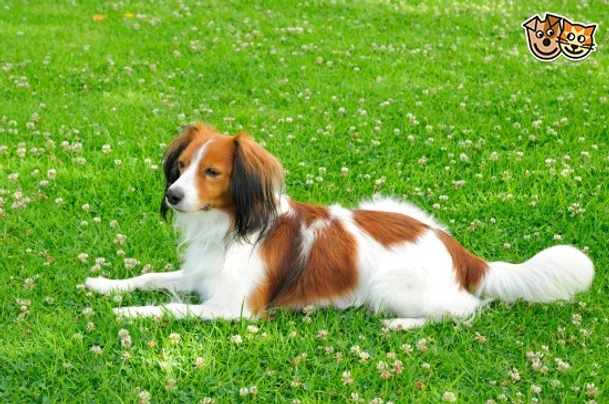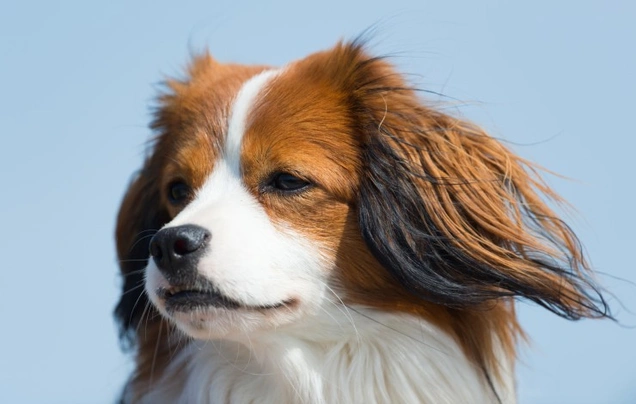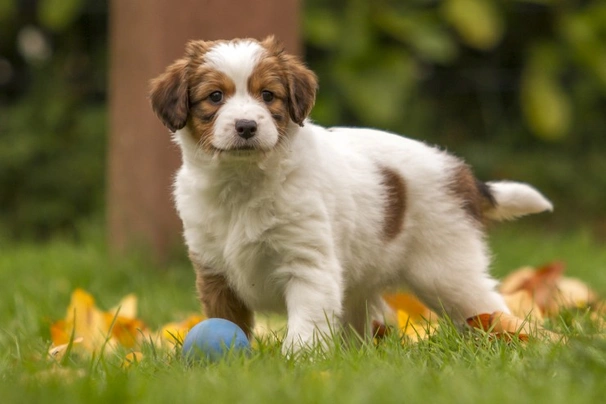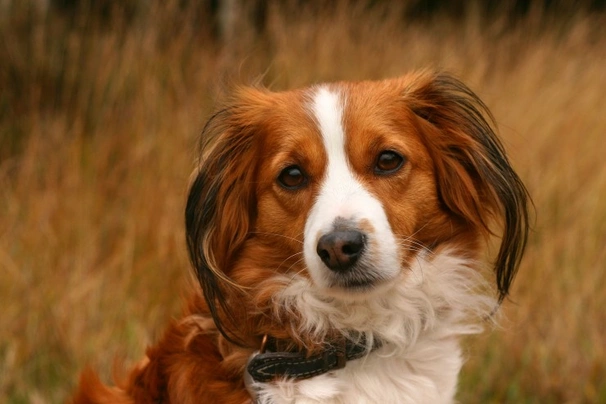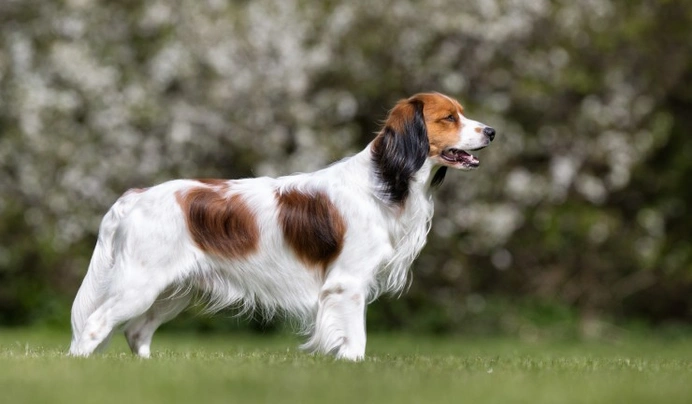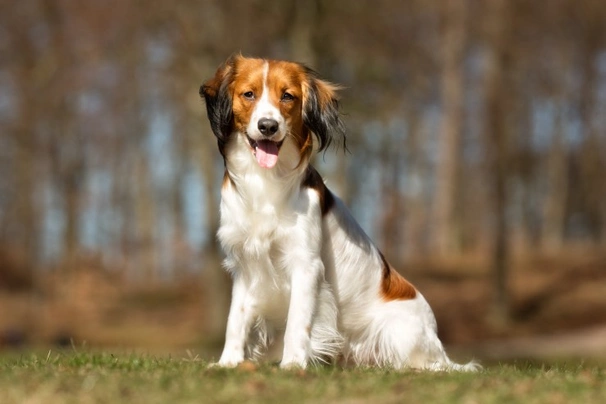Kooikerhondje
Pros
Cons
Introduction of the Kooikerhondje
The Kooikerhondje is a small intelligent active dog that originates from the Netherlands where they have always been highly prized for the job they were bred to do which is to lure ducks into hunter’s traps and nets. Some people believe these charming dogs are the founding stock for the Nova Scotia Duck Tolling Retriever and they are sometimes referred to as Kooiker Hounds.
Over recent years Kooikers have gained recognition and popularity with many people in other countries of the world which includes the UK thanks to their charming looks and loyal affectionate personalities although very few puppies are bred and registered with The Kennel Club every year. As such well-bred Kooiker puppies can often command a lot of money and waiting lists tend to be long.
History of the Kooikerhondje
The Kooikerhondje originates from the Netherlands and are a breed that has been around for hundreds of years. They were developed during the 16th century to work as duck tolling dogs which saw them drive the birds into hunter’s cages and nets. These charming dogs were extremely popular during the 17th and 18th century and were often depicted in paintings by the old Dutch masters namely Rembrandt and Jan Steen.
However by the beginning of the 20th century the breed's popularity dropped and as such their numbers fell dangerously low which nearly saw the breed vanishing altogether at the outset of World War II. Luckily through the efforts of breed enthusiasts the Kooiker was saved from extinction with the breed finally being recognised by the Dutch Kennel Club in 1971.
The breed was introduced to the UK by Mollie and Bill Yates who imported some Kooikers to their kennels after visiting Europe during the 1980’s. They continued bring well-bred Kooikers over to England to establish a breeding programme which they did using 15 dogs. However both Bill and Mollie passed away in 1994 and the kennels were closed which was a set back to the promotion of the breed in the UK and it took a number of years to get a breeding programme back on track to re-establish the breed.
In more recent times enthusiasts imported more Kooikerhondje from Denmark to the UK with an end goal being to introduce other lines to the existing ones which ensured responsible breeding continued. The breed was recognised by The Kennel Club under their “gundog” category although their classification was changed to utility in 2013.
It is widely accepted that the Kooikerhondje also contributed to the development of the Nova Scotia Duck-Tolling Retriever and although these charming dogs are gaining popularity as companions and family pets here in the UK their numbers remain very low. As such anyone wishing to share their home with a Kooiker would need to register their interest with breeders and agree to being put on a waiting list because few puppies are bred every year.
Interesting facts about the breed
- Is the Kooikerhondje a vulnerable breed? No they are very popular in their native Holland although the breed is rarely seen in the UK which means that well-bred puppies can command a lot of money and waiting lists tend to be long
- The breed was originally bred to be an all-purpose working dog as well as a pet
- Kooikerhondjes are exceptionally adaptable and can be seen working in all sorts of activities which includes PAT dogs and Prevent-a-bite dogs
- Kooikers are the perfect duck decoy dogs because they use their feathered tails to lure ducks into a chute trap
Appearance of the Kooikerhondje
Height at the withers: Males 37 - 42 cm Females 35 - 40 cm
Average weight: Males 9 - 11 kg Females 9 - 11 kg
The Kooikerhondje is an attractive compact looking medium sized dog that boasts having a gorgeous coloured coat and they carry their heads proudly which adds to their overall charming appearance. Their skulls are nicely curved being as long equal as a dog's muzzle. They have a clearly defined stop when seen in profile and their muzzles are moderately wedge-shaped without being too deep. They have almond shaped deep brown coloured eyes that are surrounded with lush red/orange hair and black rims with dogs always having a keen alert and friendly expression in them.
Their ears are nicely in proportion with a dog's head and set just above their eye level being pendant and which dogs carry close to their cheeks without a fold in them. Their ears are nicely feathered with black tips which become more noticeable as dogs get older.
The Kooikerhondje has a strong jaw with a perfect scissor bite where their upper teeth neatly overlap their lower ones. Their necks are moderately long and well-muscled with the hair being slightly thicker on it. Their shoulders are well laid back with dogs having straight front legs that show a good amount of bone and which are nicely but not overly feathered. Their bodies are muscular with dogs having nice level backs. Chests are deep and ribs well sprung and bellies are slightly tucked up which adds to a Kooiker's athletic appearance.
Their hindquarters are strong powerful and well-muscled with dogs having well developed back legs which are well feathered to the mid-thigh. Their feet are small compact and very slightly oval in shape. Tails are set in line with a dog's croup and moderately long which they carry level or just above their backs and which are well feathered forming a white plume.
When it comes to their coat the Kooikerhondje boasts having a medium length close lying coat that can be either straight of slightly wavy in texture. They have a well-developed finer undercoat with the hair on a dog's head the front of their legs and feet being shorter than on the rest of the body. Tails are well feathered as are the backs of a dog's legs but not below the hocks. The accepted breed colours for Kennel Club registration are as follows:
- Red & White
- White & Orange
- White with Red
Dogs should have a nice white blaze and they can also have a few black hairs in their coat as well as a black tail ring which is acceptable under their breed standard.
It is worth noting that the accepted breed colours for Kennel Club registration can differ from those set out in the breed standard which are as follows:
Dogs have patches of clear orange/red on white with the orange/red being the predominant colour on their bodies and they should have a white blaze. They can have a few black hairs and a slight ticking in their coats which is acceptable although not very desirable. Dogs can have a black tail ring which is also permitted under the Kennel Club breed standard.
Gait/movement
When a Kooiker moves they do so with a springy free-flowing gait showing a good amount of extension in front and lots of drive from behind.
Faults
The Kennel Club frowns on any exaggerations or departures from the breed standard and would judge the faults on how much they affect a dog's overall health and wellbeing as well as their ability to perform.
Males should have both testicles fully descended into their scrotums and it is worth noting that a dog can be a little lighter or heavier as well as slightly taller or shorter than set out in the Kennel Club breed standard which is only given as a guideline.
Temperament of the Kooikerhondje
The Kooikerhondje is a friendly even tempered character that was bred to be a duck tolling dog and as such they are hardy both in body and mind. They are energetic by nature and do really well when they live with people who lead active outdoor lives even if they are not into hunting. They are intelligent and always eager to please which means in the right hands and environment a Kooiker is easy to train. However their socialisation has to start as early as possible and it has to include introducing puppies to lots of new situations noises people other animals and dogs once they have been fully vaccinated for them to grow up to be relaxed outgoing and confident mature dogs.
When well socialised and trained the Kooiker is a pleasure to have around because they are such bright alert and well-mannered dogs to be around. They love nothing more than to be included in everything that goes on around them whether it's when they are in the great outdoors or when they are in a home environment. They can be a little shy around strangers but rarely would a Kooiker show any sort of aggressive behaviour towards people they have never met before preferring to keep their distance until they get to know someone.
Are they a good choice for first time owners?
Kooikers are a good choice for first time dog owners providing they have the time to dedicate to such an intelligent high energy dog. They are known to be very amenable and people-oriented loving nothing more than to please and to entertain their families which is one of the reasons they have always been so highly prized in their native Holland.
What about prey drive?
Although Kooikers are very social by nature they do have a high prey drive and will happily chase any animal that tries to run away or that they spot in the distance. As such care should always be taken as to where and when a dog can run off the lead more especially if there is livestock or wildlife close by.
What about playfulness?
Kooikers are known to be fun-loving dogs by nature and like to entertain and be entertained. They are always alert and eager to please although they can also be a bit mischievous when the mood takes them. Playtime can be boisterous especially when they are young but with gentle yet firm training Kooikers are quick to understand acceptable behaviour and what is not.
What about adaptability?
Kooikers are highly adaptable dogs and providing they are given enough daily physical exercise combined with as much mental stimulation to prevent boredom from setting in they are just as happy living in an apartment in town as they would be living in a house in the country. With this said like all energetic intelligent breeds Kooikers love being able to roam in a well-fenced secure back garden whenever they can to really let off steam.
What about separation anxiety?
Although Kooikers form strong ties with their families they do not generally suffer from separation anxiety although no dog likes to be left to their own devices for any extended periods of time. This could result in them developing unwanted and destructive behaviours around the home which includes barking incessantly to get some attention.
What about excessive barking?
Always on the alert Kooikerhondjes will typically bark when strangers are around or close to their environment which means they are good watchdogs. However some dogs like the sound of their own voices a little too much which is something that needs to be gently nipped in the bud when a dog is still young being careful not to be too hard on them which could have the opposite effect and make dogs bark even more.
Do Kooikerhondjes like water?
Kooikers love water and they generally very good swimmers. However if anyone who owns a dog that does not like water should never force them to go in because it would just end up scaring them. With this said care should always be taken when walking a Kooiker off the lead anywhere near more dangerous watercourses just in case a dog decides to leap in and then needs rescuing because they cannot get out of the water on their own.
Are Kooikerhondjes good watchdogs?
Kooikerhondjes are excellent watchdogs because as previously mentioned they are always on the alert and aware of what goes on in their environment although rarely would they go about this aggressively preferring to keep their distance and bark.
Intelligence / Trainability of the Kooikerhondje
The Kooikerhondje is an intelligent dog and they love nothing better than to please which in short means that in the right hands they are highly trainable and they thoroughly enjoy the one-to-one attention they are given during training sessions. However Kooikers need to be handled gently yet firmly so they understand who the alpha dog is in a household. It's important for these dogs to know who they can look to for direction and guidance or they might take on a more dominant role which can make them harder to handle. Like many other breeds they are quite sensitive by nature and as such they do not respond well to any sort of harsh correction or heavier handed training methods. They do answer very well to positive reinforcement which always brings the best out of these clever dogs.
The key to successfully training a Kooiker is to make their training sessions as interesting as possible and to avoid too much repetition which can make it harder to keep a dog focussed on what they are being asked to do. Shorter more interesting training sessions tend to work a lot better than longer more repetitive ones when training a Kooikerhondje.
Like all puppies Kooikers are incredibly cute when young and it is all too easy to spoil them when they first arrive in new homes. As soon as a puppy is nicely settled owners must start out as they mean to go on by laying down ground rules and boundaries so that a Kooikerhondje puppy understands what is expected of them. It helps establish a pecking order and who the alpha dog is in the household. The first commands a puppy should be taught are as follows:
- Come
- Sit
- Stay
- Heel
- Quiet
- Leave it
- Down
- Bed
Children and other
The Kooikerhondje is a gentle character when they are children around which makes them great family pets. They enjoy being in a home environment and thrive on being involved in everything that goes on around them which includes playing fun games with the kids. However any interaction between younger children and a dog should always be well supervised by an adult to make sure playtime does not end up getting too boisterous.
If well socialised from a young enough age the Kooiker generally gets on with other dogs they meet and if they grow up with a family cat in the home they usually get on well together too. However a Kooikerhondje would think nothing of chasing any other cats they come across. Care should always be taken when they are around any small animals and pets just to be on the safe side.
Health of the Kooikerhondje
The average life expectancy of a Kooikerhondje is between 12 and 15 years when properly cared for and fed an appropriate good quality diet to suit their ages.
Like a lot of other breeds the Kooiker is known to suffer from a few hereditary health issues which are worth knowing about if you are planning share your home with one of these active and attractive dogs. The conditions that seem to affect the breed the most include the following:
- Hip dysplasia – dogs must be hip scored through by a BVA registered vet or through the Animal Health Trust with the breed mean score being 10.0 and parent dogs should be lower
- Von Willebrand’s Disease (VWD)- dogs should be DNA tested
- Hereditary Necrotising Myelopathy (HNM/ENM) – dogs should be DNA tested
- Polymyositis
- Patellar luxation
- Epilepsy
- Myasthenia gravis
- Renal dysplasia
- Cataracts
It is worth noting that The UK Kennel Club breed average COI for the Kooiker is 4.8%.
What about vaccinations?
Kooiker puppies would have been given their initial vaccinations before being sold but it is up to their new owners to make sure they have their follow-up shots in a timely manner with the vaccination schedule for puppies being as follows:
- 10 -12 weeks old bearing in mind that a puppy would not have full protection straight away but would be fully protected 2 weeks after they have had their second vaccination
There has been a lot of discussion about the need for dogs to have boosters. As such it's best to talk to a vet before making a final decision on whether a dog should continue to have annual vaccinations which are known as boosters.
What about spaying and neutering?
A lot of vets these days recommend waiting until dogs are slightly older before spaying and neutering them which means they are more mature before undergoing the procedures. As such they advise neutering males and spaying females when they are between the ages of 6 to 9 months old and sometimes even when a dog is 12 months old.
Other vets recommend spaying and neutering dogs when they are 6 months old but never any earlier unless for medical reasons. With this said many breeds are different and it is always advisable to discuss things with a vet and then follow their advice on when a dog should be spayed or neutered.
What about obesity problems?
Like other breeds some Kooikers gain weight after they have been spayed or neutered and it's important to keep an eye on a dog's waistline just in case they do. If a dog starts to put on weight it's important to adjust their daily calorie intake and to up the amount of exercise they are given. Older dogs too are more prone to gaining weight and again it's essential they be fed and exercised accordingly because obesity can shorten a dog's life by several years. The reason being that it puts a lot of extra strain on a dog's internal organs including the heart which could prove fatal.
What about allergies?
Kooikers are not known to suffer from allergies but it's important for a dog to see a vet sooner rather than later if one flares up. Allergies can be notoriously hard to clear up and finding the triggers can be challenging. With this said a vet would be able to make a dog with an allergy more comfortable while they try to find out the triggers which could include the following:
- Certain dog foods that contain high levels of grains and other cereal-type fillers
- Airborne pollens
- Dust mites
- Environment
- Flea and tick bites
- Chemicals found in everyday household cleaning products
Participating in health schemes
All responsible Kooiker breeders would ensure that their stud dogs are tested for known hereditary and congenital health issues known to affect the breed by using the following schemes:
- Hip dysplasia – dogs must be hip scored through by a BVA registered vet or through the Animal Health Trust with the breed mean score being 10.0 and parent dogs should be lower
- Von Willebrand’s Disease (VWD) - dogs should be DNA tested
- Hereditary Necrotising Myelopathy (HNM/ENM) – dogs should be DNA tested
What about breed specific breeding restrictions?
Apart from the standard breeding restrictions that are in place for all Kennel Club registered breeds there are no other breed specific breeding restrictions in place for the Kooikerhondje.
What about Assured Breeder Requirements?
Currently there are no Kennel Club Assured Breeder requirements in place for the Kooiker
Caring for the Kooikerhondje
As with any other breed Kooikers need to be groomed on a regular basis to make sure their coats and skin are kept in top condition. They also need to be given regular daily exercise to ensure they remain fit and healthy. On top of this dogs need to be fed good quality food that meets all their nutritional needs throughout their lives.
Caring for a Kooikerhondje puppy
Kooiker puppies are boisterous and full of life which means it's essential for homes and gardens to be puppy-proofed well in advance of their arrival. A responsible breeder would have well socialised their puppies which always leads to more outgoing confident and friendly dogs right from the word go. With this said any puppy is going to feel vulnerable when they leave their mother and littermates which must be taken into account. The longer a puppy can remain with their mother the better although it should never be for too long either.
It's best to pick a puppy up when people are going to be around for the first week or so which is the time needed for a puppy to settle in. Puppy-proofing the home and garden means putting away any tools and other implements that a boisterous puppy might injure themselves on. Electric wires and cables must be put out of their reach because puppies love chewing on things. Toxic plants should be removed from flowerbeds and the home too.
Puppies need to sleep a lot to grow and develop as they should which means setting up a quiet area that's not too out of the way means they can retreat to it when they want to nap and it's important not to disturb them when they are sleeping. It's also a good idea to keep "playtime" nice and calm inside the house and to have a more active "playtime" outside in the garden which means puppies quickly learn to be less boisterous when they are inside.
The documentation a breeder provides for a puppy must have all the details of their worming date and the product used as well as the information relating to their microchip. It is essential for puppies to be wormed again keeping to a schedule which is as follows:
- Puppies should be wormed at 6 months old
- They need to be wormed again when they are 8 months old
- Puppies should be wormed when they are 10 months old
- They need to be wormed when they are 12 months old
Things you'll need for your puppy
There are certain items that new owners need to already have in the home prior to bringing a new puppy home. It's often a good idea to restrict how much space a puppy plays in more especially when you can't keep an eye on what they get up to bearing in mind that puppies are often quite boisterous which means investing in puppy gates or a large enough playpen that allows a puppy the room to express themselves while keeping them safe too. The items needed are therefore as follows:
- Good quality puppy or baby gates to fit on doors
- A good well-made playpen that's large enough for a puppy to play in so they can really express themselves as puppies like to do
- Lots of well-made toys which must include good quality chews suitable for puppies to gnaw on bearing in mind that a puppy will start teething anything from when they are 3 to 8 months old
- Good quality feed and water bowls which ideally should be ceramic rather than plastic or metal
- A grooming glove
- A slicker brush or soft bristle brush
- Dog specific toothpaste and a toothbrush
- Scissors with rounded ends
- Nail clippers
- Puppy shampoo and conditioner which must be specifically formulated for use on dogs
- A well-made dog collar or harness
- A couple of strong dog leads
- A well-made dog bed that's not too small or too big
- A well-made dog crate for use in the car and in the home that's large enough for a puppy to move around in
- Baby blankets to put in your puppy's crate and in their beds for when they want to nap or go to sleep at night
Keeping the noise down
All puppies are sensitive to noise including Kooiker puppies. It's important to keep the noise levels down when a new puppy arrives in the home. TVs and music should not be played too loud which could end up stressing a small puppy out resulting in them being withdrawn timid and shy.
Keeping vet appointments
As previously mentioned Kooiker puppies would have been given their first vaccinations by the breeders but they must have their follow up shots which is up to their new owners to organise. The vaccination schedule for puppies is as follows:
- 10 -12 weeks old bearing in mind that a puppy would not have full protection straight away but would only be fully protected 2 weeks after they have had their second vaccination
When it comes to boosters it's best to discuss these with a vet because there is a lot of debate about whether a dog really needs them after a certain time. However if a dog ever needed to go into kennels their vaccinations would need to be fully up to date.
What about older Kooikerhondje when they reach their senior years?
Older Kooikers need lots of special care because as they reach their golden years they are more at risk of developing certain health concerns. Physically a dog's muzzle may start to go grey but there will be other noticeable changes too which includes the following:
- Coats become coarser
- A loss of muscle tone
- Kooikers can either become overweight or underweight
- They have reduced strength and stamina
- Older dogs have difficulty regulating their body temperature
- They often develop arthritis
- Immune systems do not work as efficiently as they once did which means dogs are more susceptible to infections
- Older dogs change mentally too which means their response time tends to be slower as such they develop the following:
- They respond less to external stimuli due to impaired vision or hearing
- They tend to be a little pickier about their food
- They have a lower pain threshold
- Become intolerant of any change
- Often an older dog can feel disorientated
Living with a Kooikerhondje in their golden years means taking on a few more responsibilities but these are easily managed and should include looking at their diet the amount of exercise they are given how often their dog beds need changing and keeping an eye on the condition of their teeth.
Older Kooikers need to be fed a good quality diet that meets their needs at this stage of their lives all the while keeping a close eye on a dog's weight. A rough feeding guide for older dogs is as follows bearing in mind they should be fed highly digestible food that does not contain any additives:
- Protein content should be anything from 14 – 21%
- Fat content should be less than 10%
- Fibre content should be less than 4%
- Calcium content should be 0.5 – 0.8%
- Phosphorous content should be 0.4 – 0.7%
- Sodium content should be 0.2 – 0.4%
Older Kooikers don't need the same amount of daily exercise as a younger dog but they still need the right amount of physical activity to maintain muscle tone and to prevent a dog from putting on too much weight. All dogs need access to fresh clean water and this is especially true of older dogs when they reach their golden years because they are more at risk of developing kidney disorders.
Grooming of the Kooikerhondje
The Kooikerhondje has a double coat that consists of a harsher outer coat and a denser softer undercoat. They shed steadily throughout the year which means their coats need to be brushed once or twice a week to remove any dead hair and to prevent any knots or matts from forming. However they shed the most during the Spring and then again in the Autumn when more frequent brushing is usually necessary to stay on top of things. It's important to pay particular attention to dog's feathering and the longer hair found on their bodies which is longer and finer and therefore it tends to tangle a lot faster.
It's also important to check a dog's ears on a regular basis and to clean them when necessary. If too much wax is allowed to build up in a dog's ears it can lead to a painful infection which can be hard to clear up. In short prevention is often easier than cure when it comes to ear infections.
Exercise of the Kooikerhondje
Although the Kooikerhondje is a not a high energy dog they need to be given the right amount of daily exercise and mental stimulation for them to be truly happy well-rounded characters. They need at least one hour's exercise a day with as much off the lead time as possible. If they are not given the right amount of mental stimulation and exercise every day a Kooiker would quickly get bored and could even begin to show some destructive behaviours around the home which is their way of relieving stress.
A shorter walk in the morning would be fine but a longer more interesting one in the afternoon is a must. These dogs also like to be able to roam around a back garden as often as possible so they can really let off steam. However the fencing has to be extremely secure to keep these active dogs in because if they find a weakness in the fence they will soon escape out and get into all sorts of trouble.
With this said puppies should not be over exercised because their joints and bones are still growing. This includes not letting a dog jump up and down from furniture or going up or down the stairs. Too much pressure placed on their joints and spines at an early age could result in a dog developing serious problems later in their lives.
Feeding of the Kooikerhondje
If you get a Kooikerhondje puppy from a breeder they would give you a feeding schedule and it's important to stick to the same routine feeding the same puppy food to avoid any tummy upsets. You can change a puppy's diet but this needs to be done very gradually always making sure they don't develop any digestive upsets and if they do it's best to put them back on their original diet and to discuss things with the vet before attempting to change it again.
Older dogs are not known to be fussy eaters but this does not mean they can be fed a lower quality diet. It's best to feed a mature dog twice a day once in the morning and then again in the evening making sure it's good quality food that meets all their nutritional requirements. It's also important that dogs be given the right amount of exercise so they burn off any excess calories or they might gain too much weight which can lead to all sorts of health issues. Obesity can shorten a dog's life by several years so it's important to keep an eye on their waistline from the word go.
Feeding guide for a Kooikerhondje puppy
Puppies need to be fed a highly nutritious good quality diet for them to develop and grow as they should. As a rough guide a Kooiker puppy can be fed the following amounts every day making sure their meals are evenly spread out throughout the day and it's best to feed them 3 or 4 times a day:
- 2 months old - 113g to 143g depending on puppy's build
- 3 months old - 139g to 169g depending on puppy's build
- 4 months old - 151g to 181g depending on puppy's build
- 5 months old - 154g to 184g depending on puppy's build
- 6 months old - 154g to 184g depending on puppy's build
- 8 months old - 117 g to 147g depending on puppy's build
- 10 months old - 99g to 139g depending on puppy's build
Once a puppy is 13 months old they can be fed adult dog food.
Feeding guide for an adult Kooikerhondje
Once fully mature an adult Kooiker should be fed a good quality diet to ensure their continued good health. As a rough guide an adult dog can be fed the following amounts every day:
- Dogs weighing 9 kg can be fed 125g to 144g depending on activity
- Dogs weighing 11 kg can be fed 140g to 160g depending on activity
Kooikerhondje price
If you are looking to buy a Kooikerhondje you would need to register your interest with breeders and agree to being put on a waiting list because very few puppies are bred and registered with The Kennel Club every year. You would need to pay anything upwards of £1000 for a well-bred pedigree puppy.
The cost of insuring a male 3-year-old Kooikerhondje in northern England would be £24.12 a month for basic cover but for a lifetime policy this would set you back £43.98 a month (quote as of April 2018). When insurance companies calculate a pet's premium they factor in several things which includes where you live in the UK a dog's age and whether they have been neutered or spayed among other things.
When it comes to food costs you need to buy the best quality food whether wet or dry making sure it suits the different stages of a dog’s life. This would set you back between £30 - £40 a month. On top of this you need to factor in veterinary costs if you want to share your home with a Kooikerhondje and this includes their initial vaccinations their annual boosters the cost of neutering or spaying a dog when the time is right and their yearly health checks all of which quickly adds up to over £900 a year.
As a rough guide the average cost to keep and care for a Kooikerhondje would be between £60 to £90 a month depending on the level of insurance cover you opt to buy for your dog but this does not include the initial cost of buying a well-bred healthy Kennel Club registered pedigree Kooikerhondje puppy.
Buying advice
When visiting and buying any puppy or dog there are many important things to consider and questions to ask of the breeder/seller. You can read our generic puppy/dog advice here which includes making sure you see the puppy with its mother and to verify that the dog has been wormed and microchipped.
Kooikerhondjes are quite rare in the UK and as such few puppies are registered with the Kennel Club every year which means that well-bred puppies command a lot of money and waiting lists long. As such with Kooikers there is specific advice questions and protocols to follow when buying a puppy which are as follows:
- Beware of online scams and how to avoid them. You may see online and other adverts by scammers showing images of beautiful Kooikerhondjepuppies for sale at very low prices. However the sellers ask buyers for money up front before agreeing to deliver a puppy to a new home. Potential buyers should never buy a puppy unseen and should never pay a deposit or any other money online to a seller. You should always visit the pet at the sellers home to confirm they are genuine and make a note of their address.
- As previously touched upon Kooikers are rarely seen in the UK and as such some amateur breeders/people breed from a dam far too often so they can make a quick profit without caring for the welfare of the puppies their dam or the breed in general. Under Kennel Club rules a dam can only produce 4 litters and she must be between a certain age to do so. Anyone wishing to buy a Kooiker puppy should think very carefully about who they purchase their puppy from and should always ask to see the relevant paperwork pertaining to a puppy's lineage their vaccinations and their microchipping.

